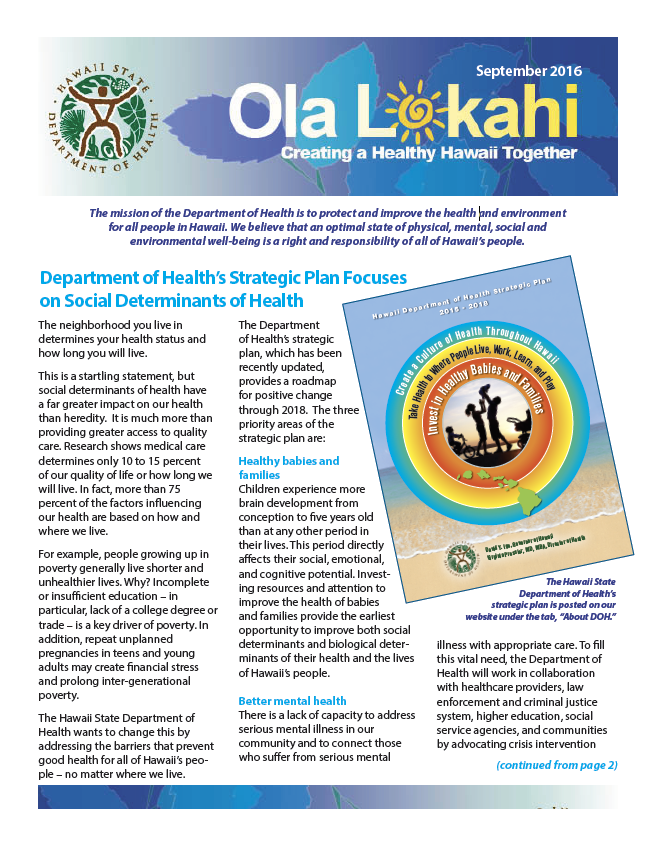Ola Lokahi Newsletter – September 2016
Posted on Sep 8, 2016 in Ola LokahiDepartment of Health’s Strategic Plan Focuses on Social Determinants of Health
The neighborhood you live in determines your health status and how long you will live. Open the attached newsletter pdf to read more.
Department of Health Demonstrates Responsiveness
The Hawaii Department of Health’s food safety inspection program, headed by Peter Oshiro, demonstrated its responsiveness to community concerns after a customer at the Don Quijote store in Waipahu videotaped a large rat descending from the ceiling on the light fixtures near the seafood section. The video went viral, resulting in 230,000 views over a two-day period and prompted calls to the Department of Health. Open the attached newsletter pdf to read more.
Improvement Projects for Better Drinking Water Moving Ahead, Thanks to Collaborative Effort Between Department of Health and Counties
Access to a safe drinking water supply is something many of us take for granted. We expect to have clean water each time we turn on the faucet in our homes, but we may not realize this involves significant investments to build and maintain our water distribution system. Open the attached newsletter pdf to read more.
Ninth Annual Hawaii Conference on Language Access
More than 300 participants from the fields of health, law, education, social services, immigration, law enforcement, interpretation and translation from both the public and private sectors are expected to gather for the Ninth Annual Hawai‘i Conference on Language Access at the Japanese Cultural Center on September 22 and 23, 2016 from 8:30 a.m. to 4:30 p.m. Open the attached newsletter pdf to read more.
The Buzz about Chikungunya
There has been a lot of buzz about dengue fever and Zika, but not as much about chikungunya, which is also transmitted by mosquitoes. Fortunately, we do not currently have any reports of chikungunya cases that began in Hawaii, but you should be aware of some of the similarities and differences of this mosquito-borne disease. Open the attached newsletter pdf to read more.
